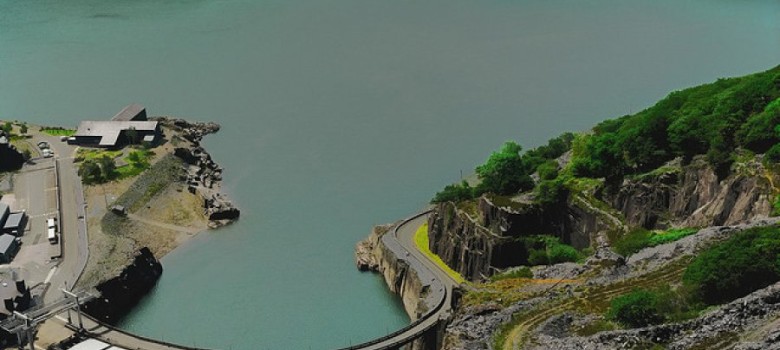
What is pumped storage?
The principles of pumped storage hydropower have been around for many years. Pumped storage accounts for more than 99% of bulk storage capacity worldwide, approximately 127,000MW according to the Electric Power Research Institute (EPRI). In the UK, for example, one of the biggest hydroelectric power stations is at Dinorwig (Wales) which has provided pumped storage since 1984.
How does pumped storage work?
The process requires two reservoirs: one at high altitude and one at low altitude. When there is low demand for electricity, water is pumped up into the top reservoir through bi-directional turbines, via large water pumps, where it is stored.
When electricity is needed in the grid to meet increased demand, the water is allowed to flow back down through the turbines, which power the generators to create the electricity that can be fed back into the grid.
In the case of Dinorwig, the pump motors are powered by off-peak electricity from the National Grid when it is cheaper overnight because demand is so low. Storage generation therefore offers a critical back-up facility during periods of excessive demand, whilst being efficient in storing energy during periods of low demand.
Getting around the pumped storage topography issue
The problem with traditional hydroelectric pumped storage is that is has limited scope for expansion. You need specific sites that are few and far between. Therefore new forms of pumped storage have to be devised.
One example is the Green Power Island concept devised by the Danish architecture firm Gottlieb Paludan. This concept involves creating a man-made island with a deep reservoir in the middle of it. Wind turbines produce the electricity to drive the pumps that pump the water out of the reservoir in to the sea. When electricity is needed, the water is allowed to re-enter this reservoir driving turbines that power the electricity generators.
The American firm Advanced Rail Energy Storage (ARES) has designed another potential grid-scale pumped storage solution. ARES is the first pumped storage company that does not rely on water. Instead it is a rail-based technology that stores energy by moving a heavy mass ‘train’ against the force of gravity. When the electricity is required, the train uses the stored gravitational potential energy to return to its original position. This motion drives turbines that produce energy via generators.
ARES is aiming to produce a wide range of energy storage facilities from 100MW to 3GW. A 3 GW system has the potential to store 24GWh of energy. In real terms, if it were implemented in the UK it would be able to power over five million homes for eight hours. Another advantage of this water-free pumped storage solution is that it is highly efficient at 85% (the ratio of energy in to energy out).
Could pumped storage be a viable energy storage technique?
In conclusion, pumped storage has already a proved to be a solution to helping countries meet peak demand. The Dinorwig power plant in Wales has been in operation now for over 25 years helping manage demand in a highly reactive way; in just 12 seconds the plant can switch from being fully shut down to operating at full capacity. To take this a step further, building wind turbines, solar PV farms and tidal energy near Dinorwig is one way to replace traditional generation technologies and connect renewables with energy storage.
New concepts are constantly being developed to remove the need to find particular topological features for pumped storage, thereby helping to open this energy storage solution to all corners of the globe.












World’s biggest-ever pumped-storage hydro-scheme, for Scotland?
The article has little to say about the energy storage capacity. Wind and solar generation are highly variable. A generation system based on them requires significant energy storage capacity to enable demand to be met reliably.